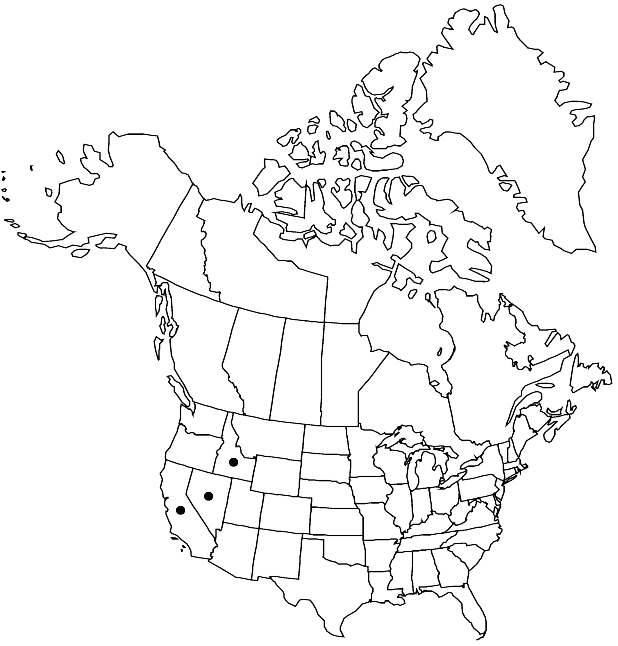Cleomella parviflora
Proc. Amer. Acad. Arts 6: 520. 1865.
Plants 3–45 cm. Stems sometimes branched distally (erect or somewhat spreading); glabrous. Leaves: stipules finely divided into crinkled threads (scarious), 1–2 mm; petiole 0.2–0.6(–0.9) cm; leaflet blade linear-elliptic, planoconvex, 0.5–3.5 × 0.1–0.4 cm, slightly fleshy, margins entire, apex acute, surfaces glabrous. Inflorescences racemes, terminating stems and branches (from all but 2 or 3 proximalmost nodes), 0.5–20 cm (5–30 cm in fruit); bracts trifoliate or unifoliate, 1–3 cm. Pedicels spreading in fruit, 2–6 mm (12–20 mm in fruit). Flowers: sepals green, broadly lanceolate, 0.5–1 × 0.3–0.6 mm, glabrous; petals pale yellow, oblong, 1.8–2.8 × 0.8–1.2 mm, glabrous; stamens yellow, 1.5–3 mm; anthers 0.4–0.6 mm; gynophore spreading, 0.5–2 mm in fruit; ovary spherical, 0.8—1.3 mm; style 0.1–0.2 mm. Capsules rhomboidal, 2.5–5 × 2.5–6 mm, (smooth), glabrous, (valves scarcely conical). Seeds 3–12, light brown, globose, 1.2–2 mm, smooth.
Phenology: Flowering spring–summer.
Habitat: Wet alkaline meadows around thermal springs in sagebrush desert
Elevation: 1200-2000 m
Distribution

Calif., Idaho, Nev.
Discussion
Cleomella parviflora is often found growing with C. brevipes and C. plocasperma.
Selected References
None.